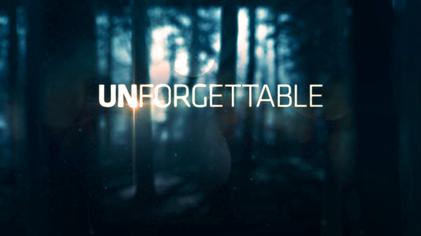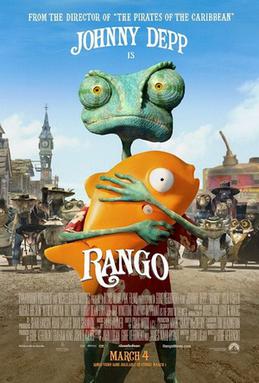Long-time readers of this blog know that I'm not a fan of winter and one way I try to combat the anxiety about the coming cold and dark months is by appreciating the unique charms of fall. One of these is the traditional fall line-up of new TV shows. So far this year, however, I haven't seen any new shows advertised that sound compelling so I'll mostly be sticking with the tried and true. But that still means that fall will be an exciting time of seeing those shows come back with new story lines.
However, you loyal readers may recall that last fall I did find some new shows to invest time in for a season. Those shows were Pan Am and Unforgettable. Unfortunately, both ended up being canceled, although apparently Unforgettable ended up becoming uncanceled. For some time now, I've been meaning to write up my closing thoughts on these shows after they had a full season to flesh out characters and story lines, so here at long last are those comments.
Pan Am
The basic premise of this show revolved around the lives of four stewardesses and two pilots working at Pan Am during the 1960s. One reason the show interested me was for the historical context and the potential to open up discussion about women's rights and roles in society, then and now. In my opinion, the show succeeded to some degree with both.
However, the show became by and large an evening soap opera, which is not particularly my favorite genre of TV. While big issues were addressed (politics, civil rights, women's liberation, smuggling, etc.), these were frequently done in that over-the-top, dramatic kind of way rather than just focusing on the moral dilemmas and character development that resulted from these. There was also a huge focus on the romantic lives of each character, which is not a bad thing in and of itself if it is done well. However, it was not always done so well on this show, with characters falling in and out of relationships in what sometimes seemed like a willy-nilly fashion. For instance, in some cases, there was no build up showing how characters came to be interested in one another, such as Ted and Amanda's whirlwind romance. But in other cases, we do get to see a long and simmering tension heating up, such as Colette and Dean's on-and-off again relationship.
Speaking of relationships, when I first wrote about Pan Am, I objected to the writers' attempt to push a relationship between Ted and Laura. By the end of the series, I was actually invested in this plot line and found the derailing of this by the Ted-Amanda relationship frustrating. So, hey, sometimes I'm wrong. ;) But, like I said then, one of the most appealing things about Ted's character was that he was basically an impulsive, immature person who needed to grow up and learn a bit more about the world, which gave him the most room to grow as a character. He did that in spades, even if sometimes falling a step backwards here and there, so he was a character I always enjoyed watching. Laura also grew as a character, even if somewhat unevenly, and perhaps she was still too naive and trusting by the end of the first season, but the idea of her in a new, committed relationship was no longer so absurd.
The show's flashbacks had been a major selling point for me in the earlier episodes of the season, as they provided the characters with rich back stories and motivations for their actions. As the show continued, however, these became less frequent and we were left with characters doing things that seemed uncharacteristic (i.e., much of Maggie's actions) without any explanation for the rationale behind these things.
However, it is important to note that the ABC network also did end up airing one of the episodes out of order so some things, such as the relationships that seemed to drop off without explanation or other plot events that seemed to come out of nowhere, suddenly became much clearer with the new information that came from actually seeing an episode that should have been aired earlier. The network did the show a great disservice here -- in a series that has a definite arc where episodes can not be just stumbled upon at random, it is imperative that the story be told in order.
The season finale (and now series finale) certainly left many things open-ended with the potential for exploration in a later season (that was never to be). Still, the final scene of the episode has just enough happiness and togetherness amongst the main cast that it makes for a satisfying enough ending to the show.
Overall, I enjoyed the show enough that I might go back and re-watch this first season (with the episodes in order this time) sometime in the future, but not I wasn't so over the moon about it that I was crushed by news of its cancellation. After the show Ringer was canceled, my friend commented in a blog post, "I'll miss you. Sort of." That pretty much sums up my feelings on Pan Am.
Unforgettable
My feelings about Unforgettable are more complicated. To me, it felt like this show had potential to be better than it was, but it kept dropping the ball. To recap, this show was about Carrie, a woman with hyperthymesia (the ability to remember everything) but can't recall the details of her sister's murder when they were children. At the show's start, Carrie picks up extra cash by basically counting cards at illegal gambling spots and spends her free time volunteering at the nursing home where her Alzheimer's-suffering mother lives. When a murder occurs in her apartment complex, Carrie is thrust into the police investigation, which is being run by Al, her former boss at the Syracuse police department and also her ex-boyfriend. By the next episode, Carrie is re-instated as a homicide detective, working with Al, Mike, Roe, and Nina on cases in which her ability to remember every little detail comes in handy and helps bring in criminals.
As a police procedural, Unforgettable picked up on every trope in the book - sexual/romantic tension between members of the crime-fighting team, a serial killer case where the killer becomes obsessed with a member of the police force, a mafia connection that leads to an ill-advised relationship, a growing expansion of the team to include the coroner and a tech-savvy lab worker, and the standard opening of each episode with a murdered corpse being found in an unlikely scenario. (This last one in particularly felt like a rip-off of Bones and NCIS and irked me to no end. Unforgettable, you're better than that. You have a fabulous main character who does interesting and exciting things. Let's see more of her personal life in the brief intro to each episode instead of the same old thing on every other crime procedural.)
The problem with most of these was that Unforgettable try to cram all of that into one season. Rather than letting these be real hooks that keep the viewer coming back from week to week, they felt like simple ploys for attention. For instance, when Carrie becomes involved with Steve Cioffi, whose family has mafia ties, this felt like a subplot that could really develop and go somewhere. Instead, we hardly ever saw their relationship or heard about it except for their initial meeting and their ultimate break-up. Granted, these were both dramatic events, but it felt like there could have been much more build up and growth than there was in the end. Likewise, Carrie and Al's past as lovers should be something that's always in the back of the viewer's mind, but the execution of this is spotty as well. There are some really great moments where you are reminded of the sexual tension that did/does exist between the two, but these intense reminders are punctuated by lots of nothingness on their relationship. The introduction of Dr. Webster and Tanya at first felt forced and too much like the show was just trying to be like every other cop show on TV, but I eventually came to like these characters and wished to see more about them develop. Like I had said when the show originally came out, the supporting cast of characters needed to be better fleshed out for the show to succeed. Unforgettable certainly made some strides in that department, but I still felt like the personal lives and motivations of Mike, Roe, and Nina especially needed to be injected more into the show. Character-driven stories are always more compelling in my book than plot-driven ones, so I was constantly craving more about the characters' relationships with each other, their home lives, their back stories, how the cases were affecting them, and so on. We saw some of this, but never enough for my tastes.
The serial killer obsessed with matching wits with Carrie was one subplot that was done very well. This story line, along with the ongoing mystery of the murder of Carrie's sister Rachel when they were children, was one that kept me tuned into the show and wanting to see where it would go next. These were where Unforgettable shone and you saw how it could be compelling, even if not so very different from the myriad of other police procedurals on the air.
Otherwise, most weeks the show was just another cop show with a mystery to unravel by the end of the hour. I like a good mystery (although these ones weren't terribly hard to guess before the big reveal), so this isn't necessarily a bad thing; it's just not necessarily a good thing either. For that reason, I wasn't particularly surprised when the show was canceled, although I was disappointed that it was going to end without us knowing who murdered Carrie's sister, despite her coming closer to finding this out throughout the season. I was, however, surprised to find out it was renewed after being canceled, as that seems like an unusual move for TV executives. With the mystery of Rachel's murder still out there, I'll probably tune back in to the show. But it still has some work to do before it can become truly unforgettable.



